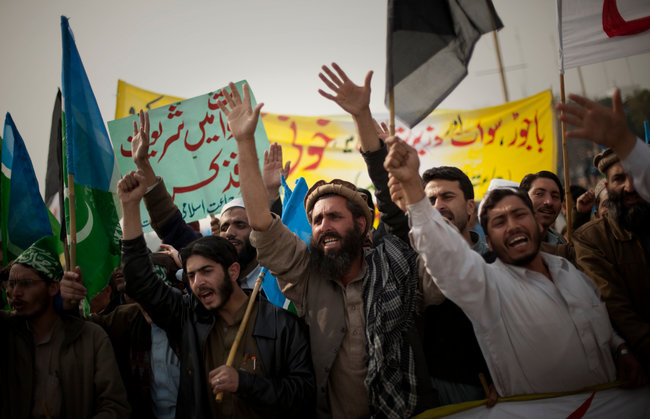President Obama at Head of Drone Strikes Approval Process as Unrest Rises in Yemen

Ever since President Obama explicitly approved expansion of the unmanned aerials (drones) program by the CIA and US Military in Yemen, civilian outrage in Yemen has increased and Al Qaeda has received a much-needed boost in recruitment and public sympathy. Moreover, the process the government goes through when ordering a lethal drone strike has remained murky. Recent developments, however, suggest President Obama may be personally approving and directing each individual strike.
The New York Times reported on Tuesday, May 29th that the approval process for a drone strike starts with a so-called kill list:
“Every week or so, more than 100 members of the government’s sprawling national security apparatus gather, by secure video teleconference, to pore over terrorist suspects’ biographies and recommend to the president who should be the next to die. This secret “nominations” process is an invention of the Obama administration, a grim debating society that vets the PowerPoint slides bearing the names, aliases and life stories of suspected members of Al Qaeda’s branch in Yemen.”
The approval process for a drone strike has been a longstanding mystery of the Obama Administration. The CIA’s especially clandestine drone use is one of the starkest examples of contrast with the President’s campaign promise to bring transparency to the White House.
Now with answers about the process finally being exposed, findings show not only a weekly-expanded kill list, but also show the President at the head of it all. Jo Becker and Scott Shane at the Times report, “He signs off on every strike in Yemen and Somalia and also on the more complex and risky strikes in Pakistan — about a third of the total.”
Though many aspects of the strike process remain murky, it is now clear that President Obama has taken a major leadership role and level of accountability in the aerial war against Al Qaeda. This development quells worries that assassinations were being approved and carried out on the sole authority of the CIA.
While President Obama’s role assuages some concerns about the approval process, it sparks new ones about the extent of the operations and if there is an end in sight. According to the LA times, American troops are operating on the ground from within Yemen to facilitate more accurate strikes, a sign of commitment to involvement in the nation. Thus, new information on the way drone strikes function is part comforting and part alarming.
As the process itself becomes more illuminated, so does the impact it’s having on the War on Terror. In Yemen, public outcry against drones is growing, and anti-US sentiment is at an all-time high. The Washington Post quotes Mohammed al-Ahmadi, a human rights activist in Yemen, “Every time the American attacks increase, they increase the rage of the Yemeni people, especially in al-Qaeda-controlled areas. The drones are killing al-Qaeda leaders, but they are also turning them into heroes.”
At the time of the first US drone strike in Yemen (in 2009 under the Obama Administration) there was an estimated 300 members of Al Qaeda’s Yemen affiliate (known as Al Qaeda in the Arabian Peninsula, or AQAP). Today, there are an estimated 700. This leads many human rights groups to question whether drone strikes eliminate as many threats as they create. Furthermore, many tribal leaders and elders in Yemen, some of the few remaining voices with the power to decry AQAP, are veering away from support of the US because of civilian casualties.
Though the civilian toll and recruitment benefit for Al Qaeda are strong negatives, the drone program is far from a total failure. As Becker and Shane put it in the Times, “The strikes have eviscerated Al Qaeda.”
President Obama continues to approve expanded use of unmanned aerial strikes across the Middle East, and apparently plays a pivotal role in choosing who gets to live and who is picked to die. While the drone process is becoming clear, it remains unclear whether the drone war is one worth waging. President Obama is sending a message to the American people: he is sure that it is.




